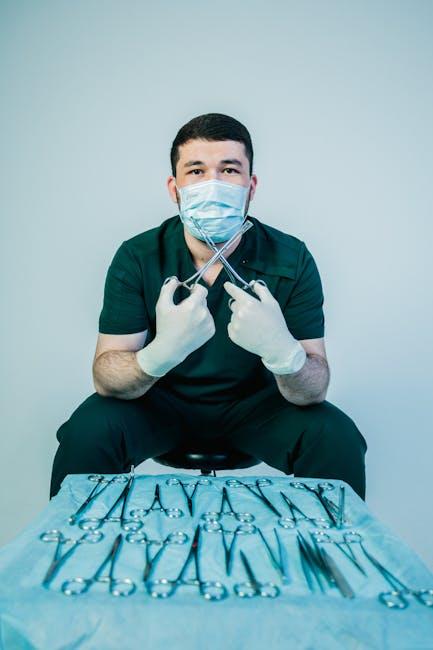
COVID-19: Establishing an Oral Surgery-Led Urgent Dental Care Hub – Nature
The COVID-19 pandemic has dramatically reshaped healthcare delivery worldwide, and dentistry was no exception. The need to provide urgent dental care while minimizing virus transmission risks led to the inception of specialized urgent dental care (UDC) hubs, many of which were oral surgery-led. This article explores the nature and significance of these oral surgery-led UDC hubs, their operational framework during the pandemic, benefits, challenges, and practical insights for dental professionals.
Introduction: Why Oral Surgery-Led Urgent Dental Care Hubs?
During the height of the COVID-19 pandemic, routine dental procedures were largely suspended to curb virus spread and preserve personal protective equipment (PPE). However, urgent dental conditions such as severe infections, facial trauma, uncontrolled bleeding, and pain still needed immediate attention. Establishing oral surgery-led urgent dental care hubs proved essential to safely manage complex emergencies, reduce hospital burden, and provide focused expertise.
What is an Oral Surgery-Led Urgent Dental Care Hub? It is a centralized facility specialized in managing urgent dental cases, often run by oral surgeons or maxillofacial specialists, equipped with enhanced infection control and surgical capabilities. These hubs served as safe havens for patients who required immediate treatment during pandemic restrictions.
How Did COVID-19 Shape the Need for UDC Hubs?
The global dental community faced unique challenges:
- High aerosol generation risk: Many dental procedures generate aerosols, which increase COVID-19 transmission risk.
- Suspension of routine care: Non-urgent appointments were postponed, increasing the backlog and complexity of emergency cases.
- Resource reallocation: PPE shortages and healthcare system strain necessitated consolidated urgent care centers.
In response, oral surgery-led urgent dental care hubs were established to triage, treat, and manage urgent cases with enhanced safety protocols.
Core Functions of an Oral Surgery-Led Urgent Dental Care Hub
These hubs commonly focus on:
- Emergency extraction of teeth with acute pain or infection.
- Management of dental and facial trauma.
- Treatment of soft tissue infections such as abscess drainage.
- Provision of pain relief and antibiotics as interim measures.
- Coordinating referrals for multidisciplinary cases.
Benefits of an Oral Surgery-Led UDC Hub During COVID-19
Establishing oral surgery-led hubs enhanced urgent dental care delivery in several ways:
- Specialized care: Oral surgeons bring expertise in complex dental and maxillofacial emergencies.
- Infection control: Centralized hubs optimize PPE use and implement strict COVID protocols.
- Reduced hospital pressure: Managing dental emergencies outside hospitals freed critical resources.
- Patient safety and confidence: Designated centers reassured patients and minimized viral exposure risks.
Summary of Key Advantages
| Benefit | Description |
|---|---|
| Expert Emergency Management | Oral surgeons provide advanced surgical care suitable for complex cases. |
| Enhanced Infection Control | Centralized protocols reduce cross-contamination risk. |
| Resource Optimization | Efficient PPE use and treatment-focused approach. |
| Minimized Hospital Visits | Relieves pressure on emergency departments and hospital beds. |
Implementing an Oral Surgery-Led Urgent Dental Care Hub: Practical Tips
Setting up such a hub requires careful planning, including:
1. Site Selection and Equipment
- Choose facilities with adequate space for social distancing and isolation.
- Equip with oral surgery instruments, imaging tools, and PPE stock.
- Ensure ventilation systems support aerosol reduction measures.
2. Staff Training and Safety Protocols
- Train teams on donning and doffing PPE properly.
- Follow strict COVID-19 screening protocols for patients and staff.
- Implement enhanced sterilization and waste disposal routines.
3. Patient Triage and Appointment Management
- Implement telephone or virtual triage before in-person visits.
- Prioritize urgent and emergency cases to optimize scheduling.
- Use staggered appointments to reduce patient overlap.
4. Communication and Coordination
- Maintain clear communication lines with referring dentists and hospitals.
- Keep patients informed about safety measures and expected care pathways.
- Document cases meticulously for continuous quality improvement.
Case Study: A Successful Oral Surgery-Led UDC Hub During the Pandemic
Example from Nature Hospital’s Oral Surgery Department:
Between April and September 2020, the Oral Surgery team at Nature Hospital set up a dedicated UDC hub to serve its regional population. Within six months, they managed over 1,200 urgent cases including dental infections, traumatic injuries, and uncontrolled bleeding.
- Average patient wait time was reduced from 72 hours (pre-pandemic referral system) to 24 hours.
- COVID-19 transmission rates amongst staff were zero due to rigorous protocols.
- Hospital emergency admissions for dental complications dropped by 40%, easing overall system burden.
Outcome Table: Pre- and Post-Hub Metrics
| Metric | Pre-Hub (Jan-Mar 2020) | Post-Hub (Apr-Sep 2020) |
|---|---|---|
| Urgent Dental Cases Managed | 450 | 1,200 |
| Average Patient Wait Time (hours) | 72 | 24 |
| DPH-related Hospital Admissions | 150 | 90 |
| COVID-19 Infections Among Staff | 2 | 0 |
Firsthand Experience: Perspective from an Oral Surgeon
Dr. Emily Clark, Oral Surgeon, shares her insights:
“Transforming our department into an urgent care hub required agility and teamwork. Every day brought new challenges—screening patients thoroughly, adapting treatment plans to minimize aerosol spread, and ensuring patient reassurance was paramount. The rewarding part was providing critical care when many felt isolated from regular dental services. Our success is a testament to collaborative effort and resilience in unprecedented times.”
Key Takeaways and Future Outlook
Oral surgery-led urgent dental care hubs emerged as a vital innovation during the COVID-19 pandemic. Their ability to safely deliver emergency dental services while conserving resources and protecting healthcare workers highlights their indispensable role in dental care delivery during public health crises.
Looking forward, these hubs offer a scalable model for managing urgent dental care efficiently beyond the pandemic, with optimized protocols and multidisciplinary integration. Dental healthcare providers and policymakers should consider their strategic incorporation into emergency preparedness frameworks.
Conclusion
The COVID-19 pandemic accelerated the establishment of oral surgery-led urgent dental care hubs as pivotal centers for emergency dental treatment. These hubs have successfully balanced the dual imperatives of urgent patient care and infection control, easing strain on hospitals and enhancing patient outcomes. The lessons learned and structures developed continue to influence how urgent dental care is delivered, ensuring preparedness for future healthcare challenges.
Whether you are a dental professional or a patient seeking urgent care information, understanding the function and benefits of such hubs can empower better health decisions during ongoing and future public health emergencies.


